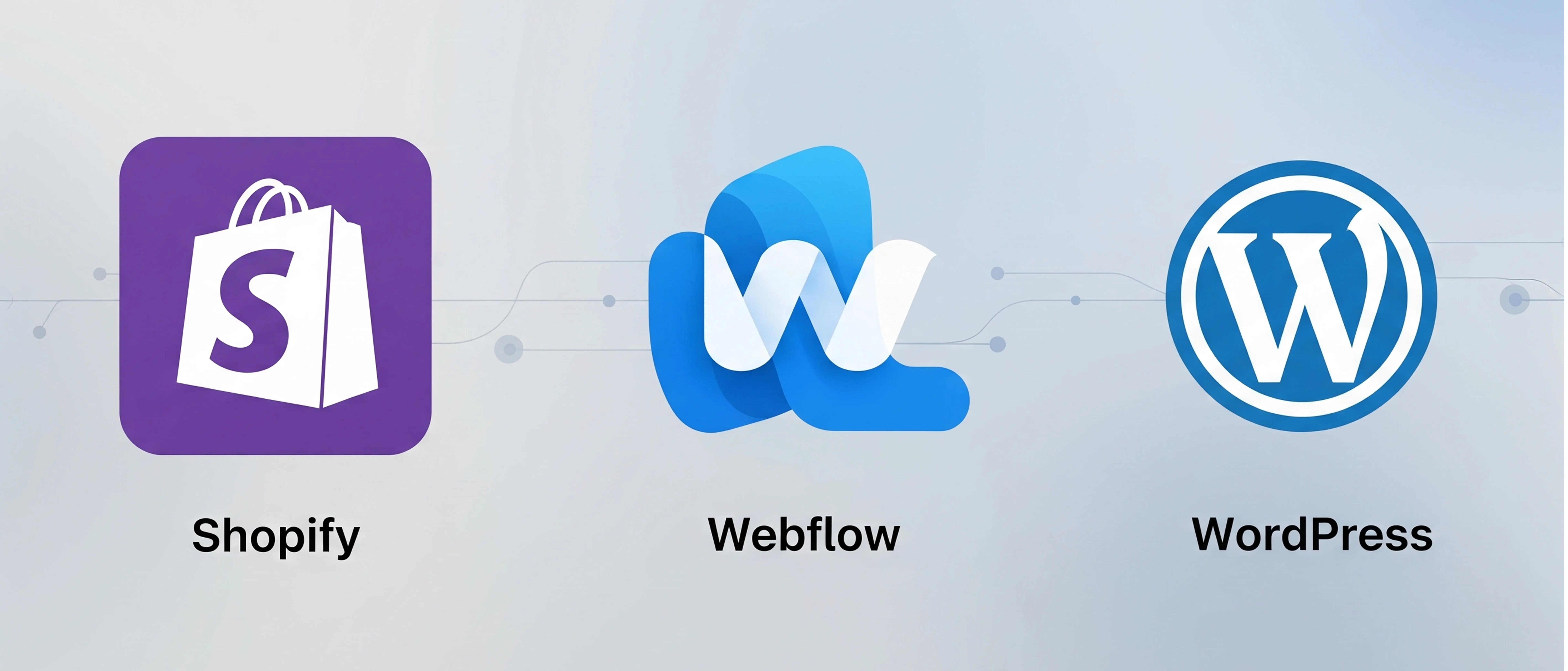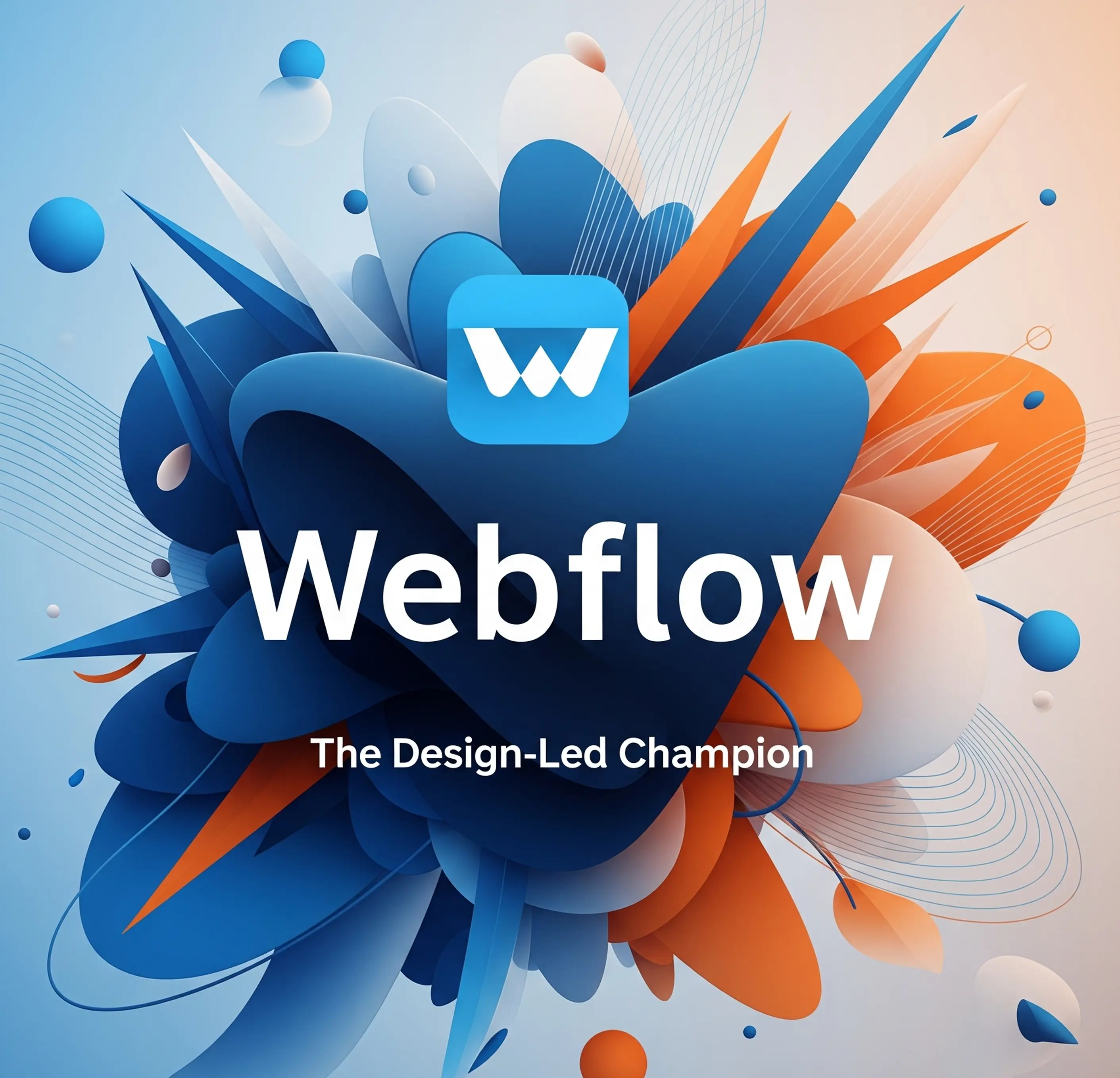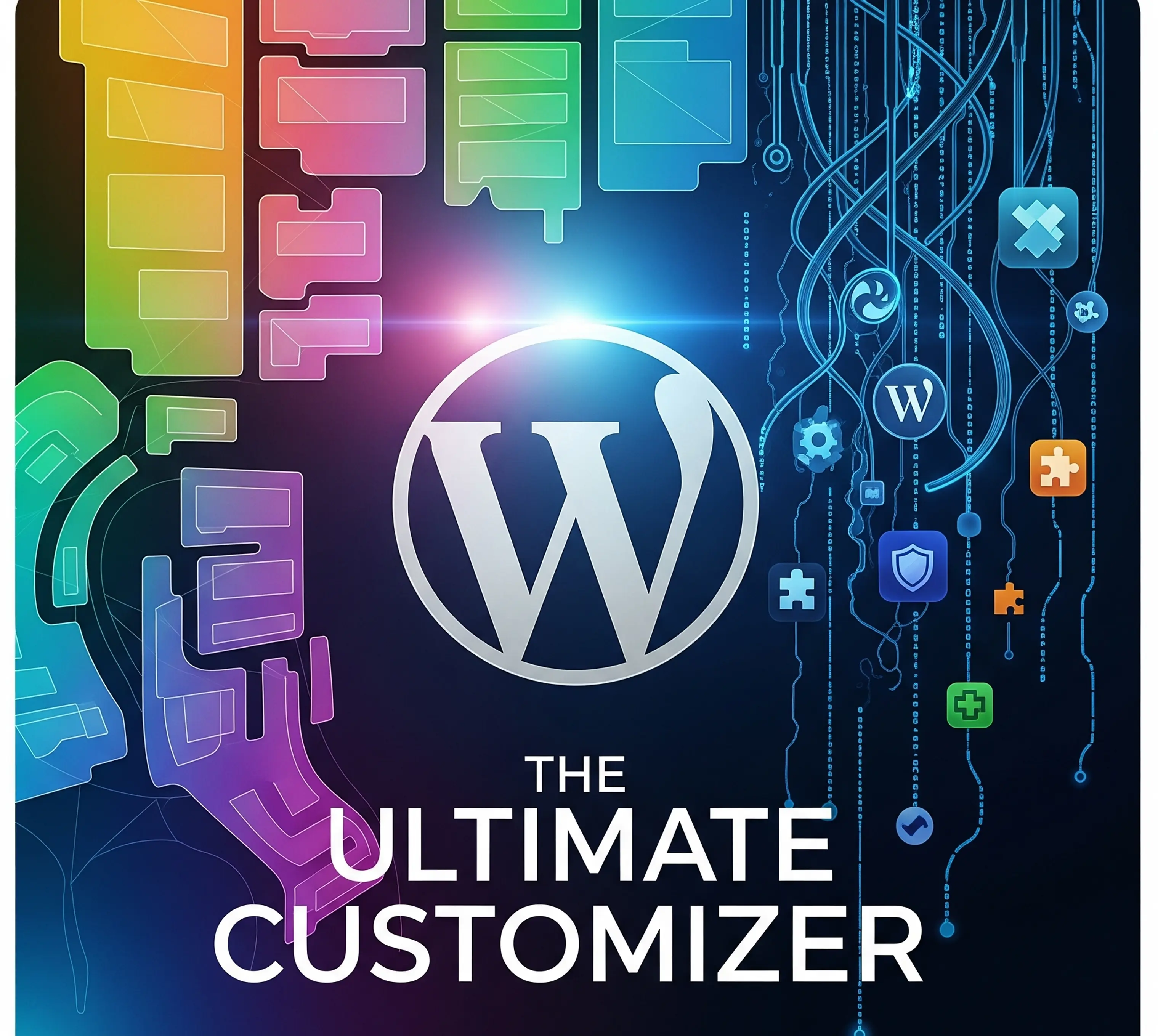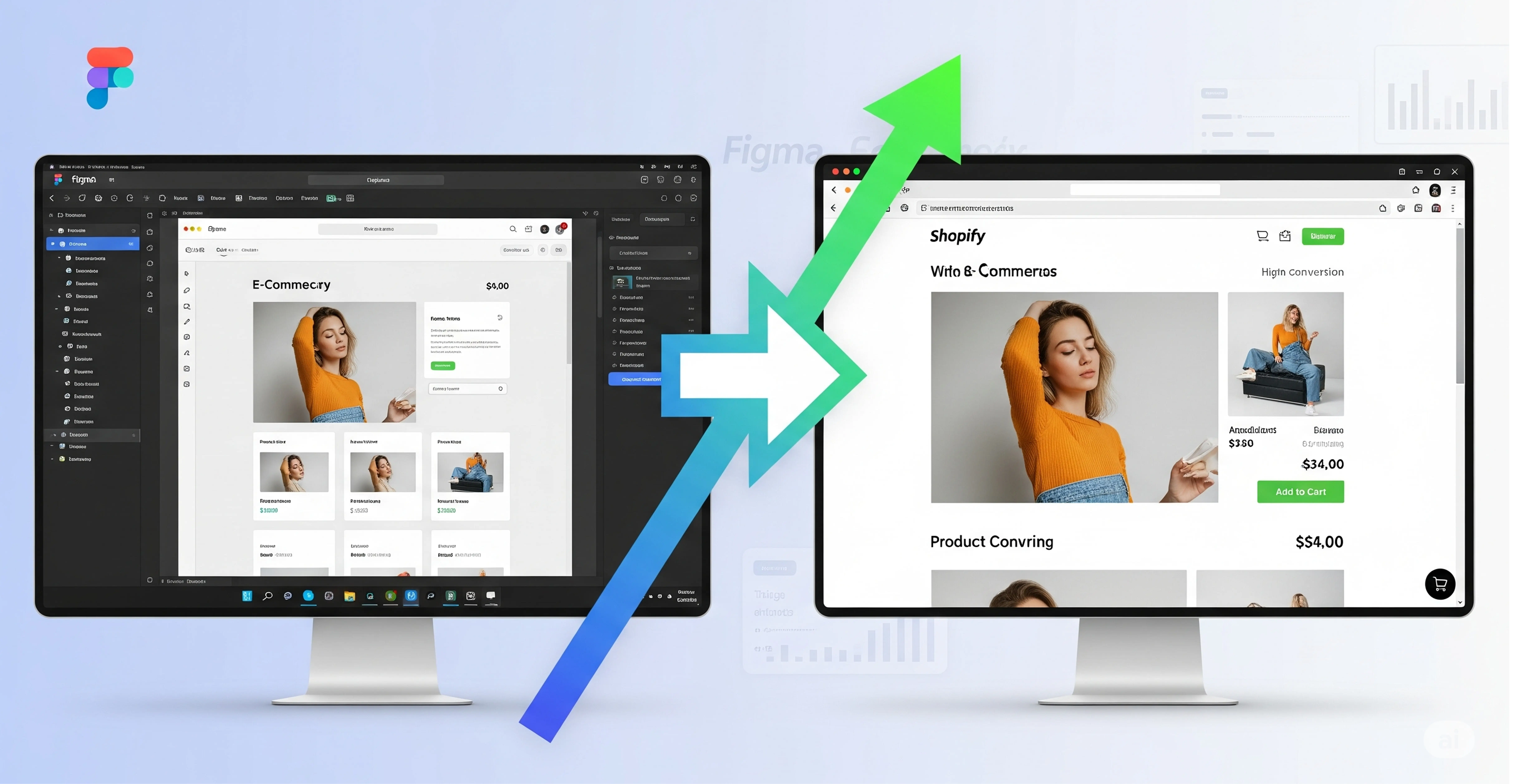Shopify vs. Webflow vs. WordPress: Which Platform is Right for Your Business in 2025?

Choosing the right platform for your website is the single most important decision you'll make for your online business. It's the foundation upon which your brand's digital presence will be built, influencing everything from design flexibility and user experience to maintenance costs and scalability. The three dominant players in the market today are Shopify, Webflow, and WordPress.
But which one is right for you? The answer isn't simple, because there is no single 'best' platform. There is only the best platform *for your specific goals*. As a Shopify developer who also builds on all three, I'm here to provide a clear, jargon-free guide to help you make an informed decision in 2025.
Webflow: The Design-Led Champion

Webflow is the undisputed king of design freedom. It's a visual web development platform that writes clean, semantic code as you design, offering the power of front-end coding without having to write it by hand. It's for brands that refuse to compromise on their creative vision.
Webflow Pros:
- Unmatched Design Control: You can build literally any layout or design you can imagine, with pixel-perfect precision.
- World-Class Animations: Webflow's interactions engine (IX2) allows for complex, rich animations and micro-interactions that bring a site to life.
- Clean, Fast Code: Because there are no bloated themes or plugins, Webflow sites are inherently fast and performant.
- Zero Maintenance: Webflow handles all hosting, security, and updates. You never have to worry about a plugin breaking your site.
Webflow Cons:
- Limited eCommerce Scalability: While Webflow eCommerce is great for boutique stores, it lacks the deep feature set and app ecosystem needed for very high-volume or complex retail operations.
- Smaller App Ecosystem: It requires custom code or third-party tools (like Memberstack or Jetboost) for functionality that Shopify or WordPress might have a simple plugin for.
Best for: Marketing websites, creative portfolios, SaaS company sites, and design-led brands that need a visually stunning online presence with a powerful CMS.
Shopify: The Unbeatable eCommerce Powerhouse

Shopify is built for one thing: selling products online. Its entire ecosystem, from its core functionality to its massive app store, is laser-focused on making it easy to manage products, process payments, and grow an eCommerce business.
Shopify Pros:
- Robust eCommerce Engine: It handles everything from inventory management and discount codes to secure payments and global shipping. It's incredibly reliable.
- Massive App Store: If you need a specific feature (subscriptions, loyalty programs, advanced reviews), there's almost certainly an app for it.
- Scalability: Shopify can handle everything from your first sale to millions in revenue with Shopify Plus, which offers enterprise-level features.
- Secure & Managed: Like Webflow, Shopify is a fully hosted platform, so you don't have to worry about security, hosting, or server maintenance.
Shopify Cons:
- Design Limitations: While Online Store 2.0 has improved things, achieving a truly unique design often requires significant custom theme development. You are more constrained than with Webflow.
- Transaction Fees: If you don't use Shopify Payments, Shopify charges a transaction fee on every sale, in addition to what your payment processor charges.
Best for: Any business that sells products online. It's the default choice for direct-to-consumer (D2C) brands, from startups to global enterprises.
WordPress: The Ultimate Customizer

WordPress is open-source software, which means you have 100% ownership and control over every aspect of your website. Its strength lies in its limitless flexibility, making it the go-to choice for content-heavy sites and projects with unique functional requirements.
WordPress Pros:
- Total Flexibility & Ownership: You are not locked into any platform. You can host your site anywhere and modify any part of the code.
- Massive Plugin Ecosystem: With over 50,000 plugins, you can add almost any functionality imaginable, from forums and social networks to advanced SEO and learning management systems (LMS).
- Best for Content & SEO: WordPress was born as a blogging platform, and its content management capabilities are second to none, giving you incredible control over your SEO strategy.
WordPress Cons:
- Maintenance & Security Burden: You are responsible for all updates, security, and backups. Neglecting this can lead to a slow or hacked website.
- Performance Issues: Without expert optimization and good hosting, WordPress sites can become slow and bloated due to poorly coded themes and an over-reliance on plugins.
Best for: Content-driven businesses, publications, blogs, sites with complex or unique features, and anyone who wants complete control over their digital asset.
Conclusion: Making the Right Choice
Let's summarize. Your choice depends on your primary business goal:
- If your priority is **brand and design**, choose **Webflow**.
- If your priority is **selling products online**, choose **Shopify**.
- If your priority is **content and flexibility**, choose **WordPress**.
Choosing the right platform is a critical strategic decision. If you're still unsure which path is right for your vision, I can help. I provide Shopify development services and platform-agnostic guidance. If you're looking to hire a Shopify developer, let's connect.As a developer with deep expertise in all three, I can provide an unbiased recommendation tailored to your specific needs and budget.
An expert comparison of Shopify, Webflow, and WordPress. Understand the pros, cons, and ideal use cases for eCommerce, design freedom, and content to choose the best platform.
Related posts

Beyond Pixel-Perfect: 5 Lessons from Turning a Figma Design into a High-Converting Shopify Store
Learn how to turn a Figma design into a lightning-fast, high-converting Shopify store. Discover key lessons on Core Web Vitals, A/B testing, and strategic app integrations.

Do You Really Need a Headless Website? A Simple Guide for Business Owners
A plain-English guide to headless architecture. Understand the benefits (speed, flexibility), the costs, and whether a headless CMS is right for your business.